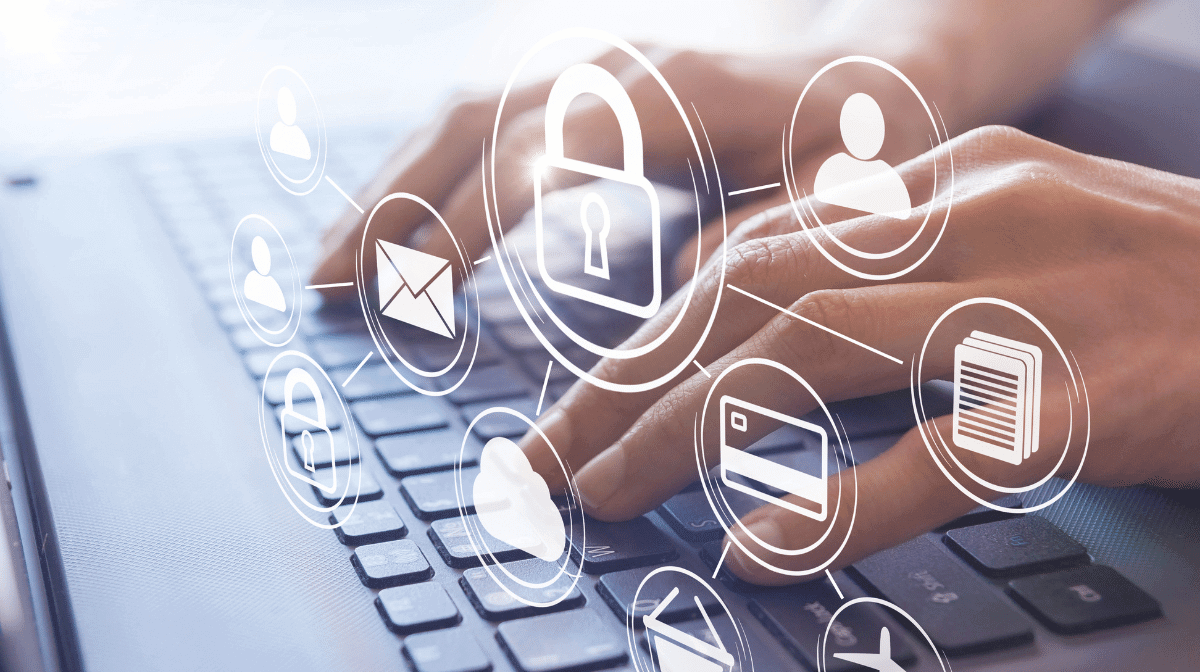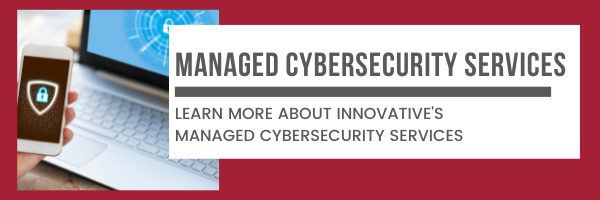What is the Difference Between EDR and MDR?
This ever-evolving world of technology can be hard to keep up with. You’re always facing new choices when it comes to this stuff. It can be difficult to tell if you’re making the right decisions.
These choices carry even more weight when choosing the right cybersecurity solutions. Your cybersecurity choices will decide how you protect your organization and could make or break your business.
While searching for the right cybersecurity solution, you may have heard two terms: Endpoint Detection and Response (EDR) and Managed Detection and Response (MDR).
These terms sound similar, but the comparison is apples to oranges. Let’s get into what these solutions are, how they work together and what makes MDR more advanced.
What is EDR?
EDR (Endpoint Detection and Response) is next-gen anti-virus and anti-malware. This is a smarter and more advanced option than the traditional anti-virus you might use on your home computer. It detects known threats, suspicious files and programs that behave like a threat. It can also respond to these potential threats.
Having EDR instead of traditional anti-virus will decrease downtime if a threat reaches your system. Innovative currently offers a solution called Malwarebytes, but we’re constantly evaluating our products to make sure our clients are getting the best available.
EDR is the minimum level of endpoint threat protection we recommend for every business. It’s necessary these days to protect your data and avoid downtime. That old traditional anti-virus just isn’t going to cut it.
What is MDR?
MDR (Managed Detection and Response) combines technology (which typically includes at least one EDR tool paired with other security technologies) and human expertise to seek out, monitor and respond to threats. It’s usually a 24/7/365 operation with the singular goal of preventing threats and quickly resolving them.
MDR will always cover endpoints with EDR, and often multiple EDR solutions. Some MDRs also protect cloud services.
While we can speak generally about what MDR is, not all MDRs are the same. Some are more advanced than others. At the very least, though, all MDRs will be supported by a Security Operations Center (SOC).
A SOC is the people, processes and technology that monitor around the clock for threats. This is where that added human element and the 24/7/365 aspect come in.
EDR vs. MDR: Key Differences
While the definitions alone have already revealed some of what makes these options different and hard to compare, let’s dive a little deeper.
Human Element
For starters, MDR sets itself apart from EDR because of the human element. As mentioned above, every MDR will be supported by a SOC. Having a SOC means a real-life human can respond to any threats when needed. As great as computers are, they can’t catch everything. It’s still critical to have people involved with the process.
24/7/365 Response
The SOC allows us 24/7 response, which will help you sleep better at night knowing your company is being protected. While an EDR will monitor 24/7, it might not be able to resolve certain issues; this is where the human element is so important.
Let’s say your EDR detects a threat at 3 a.m. If we don’t get around to that threat by the start of the workday, it could have infected your whole system. When you have MDR, the SOC provides coverage around the clock, meaning that the threat will be resolved as soon as possible.
While EDR does have some automated response, it can’t catch everything. Even if it catches an infected endpoint and isolates it from the network, it still might need a human to remediate the issue.
If that sounds like a random instance, you might be surprised. Cybersecurity firm FireEye collected some data that was pretty eye-opening (no pun intended).
According to their study, “In 76% of incidents reviewed, ransomware was executed in victim environments before 8:00 a.m. or after 6:00 p.m on a weekday or over the weekend, using the time zone and customary working week of the victim organization.”
“We’re seeing a majority of these threats show up outside work hours,” our CIO Tyler said. “It’s on us to be aware of these attempts and make sure we never let our guard down.”
Multi-EDR within MDR
Here at Innovative, our MDR uses two EDRs to monitor for threats. This layering is an added benefit of MDR and will be more effective at stopping threats. No single tool can prevent everything, so we use more than one tool.
The cool thing about multiple EDRs is that they can work together by specializing in different things. If one doesn’t stop the threat, the next one likely will. Think of one EDR as the boots on the ground and the other as the reinforcements.
The evolution of cyber security also plays a role here. Years ago, it would have seemed foolish to use multiple anti-virus solutions at the same time. Now that we have more advanced EDR solutions, we’re able to implement them together.
Cloud Monitoring
An important aspect of MDR is its cloud monitoring capability. EDR is only going to cover your endpoints, which is only part of the equation.
In today’s age, there’s a lot of work activity in the cloud, and tons of data is stored there. It’s critical that the proper steps are being taken to protect this element of your network.
Which one is Right for You?
While it might sound like we’re hyping up MDR as the better solution, it might not necessarily be the better solution for everyone. Yes, MDR will keep your company better protected, but we understand that some companies are smaller and might not need to go that extra mile.
For some companies, EDR works and does everything they need it to. That’s great! The only thing we’re going to recommend against is having traditional anti-virus software. The old-school anti-virus is outdated and won’t adequately protect your business.
While EDR and MDR essentially function as brains, traditional anti-virus is more like a checklist. Big difference, right?
We Pick the Best Solutions for You
If you’re worried about the solutions used for EDR and MDR, know that in Innovative’s case, we do our research to make sure you’re getting the best. In addition to that, we’re experts on them, allowing for the fastest service possible.
The same goes for the SOC we partner with. They’re comfortable and knowledgeable with these tools, allowing for faster response times. When you’re dealing with cybersecurity, a quick response is more important than the software itself.
Hopefully, you now have a better idea of what these two services are and what makes them different. If you’re here because your company is trying to decide on which cybersecurity solutions you want to use, be sure to check out the rest of our blog.
The decision-making process for these services is crucial. There’s nothing wrong with doing some online research to see what you think might fit your company best.




